Viewer discretion advised: Frostbite_updated_24_04_13
- Details
- Hits: 27047
Artikelindex

Above: The April 4th 2013 weather report reads "Last Winter Week". For weeks now a North-Eastern wind is blown in between high-pressure areas to our North and Low pressure areas above the South-Eastern half of Europe towards The Netherlands. It is expected that coming week that is going to change. The wind will weaken and temperatures shall rise.
On the following pages a modest homage to some of the challenging opportunities this year's Winter created to keep training going: win the game in the mind first, then do it. Warning: some viewers may find exposed blisters on following page offensive, for which viewer discretion is advised.
This winter (2012-2013) gave some of the most challenging and rewarding training opportunities I ever experienced. After a very suppressed December (meaning: not cold), that allowed to warm up and get ready for a period of freshness that now stretches from one third into Januari till half way into March. With snow, ice, cold winds, freezing temperatures and some beautiful sunny days also. Clothing/protection/food: I did not bring anything -- except some water and occasionally some dried fruits. I wore gloves, an extra sweater. But my pants are the same as in summer, as are the feet: barefoot. Getting out 10K into the distance meant having to go 10K back. There is no quitting option: you have to keep on moving to return otherwise you freeze. As we all know: before the start you got to win the game in the mind first, then you set out unfolding it. As pictured below (warning: some viewers may find exposed blisters offensive) frostbite turned out to be unavoidable: The blisters may become hard and blackened, but usually appear worse than they are.
What is frostbite?
At or below 0 °C (32 °F), blood vessels close to the skin start to constrict, and blood is shunted away from the extremities via the action of glomus bodies. The same response may also be a result of exposure to high winds.This constriction helps to preserve core body temperature. In extreme cold, or when the body is exposed to cold for long periods, this protective strategy can reduce blood flow in some areas of the body to dangerously low levels. This lack of blood leads to the eventual freezing and death of skin tissue in the affected areas. There are four degrees of frostbite. Each of these degrees has varying degrees of pain.

Above: Haarlem, 17 Maart 2013. Feet after salt-bath: cleaning the blisters
Why run barefoot?
It allows severe injury-free-smooth-running. It is amazing to experience the natural capacity of feet and legs, the whole body, to deal with given circumstances, such as the landscape, the weather, distance and duration. If training could be summoned in a premise, it could be: feel what you are doing, breath life into that, go the distance and return to enjoy a good meal and the company of people.
But what about the ugly looking blisters as pictured above?
Minor damage, natural effect. Imagine so many hours going unprotected into snow and frost. All toes, feet, legs are still alive! On top of that: it doesn't prevent from training (as nasty shoe-related injuries do!) and it cures over time -- no need for treatment, new shoes or orthopedic extensions, with all due respect. As someone said: "It is not the strongest of the species that survive, nor the most intelligent, but the one most responsive to change."

Above: Haarlem, 24 Maart 2013. One week later.
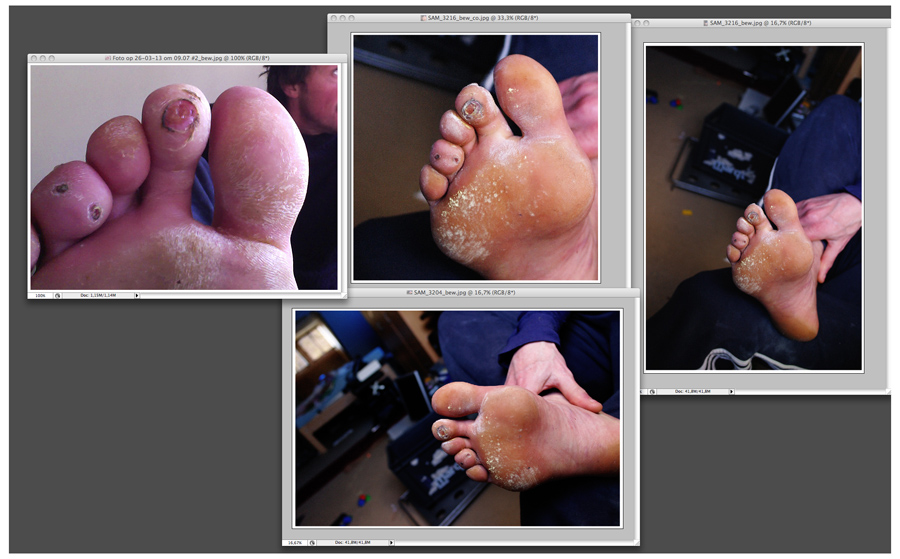
Above: Haarlem 26 en 27 Maart 2013, morning before 20+K training (26 Maart, image top-left), day after training (27 Maart 2013, with dusting powder).
While training continued: besides fat toe on the left with its Alien-look-alike-appearance, sensitive but almost painless, clean, steadily diminishing hole in the toe 'sole':

Above: While 20K trainings continued -- on the 30th, the 1st and the 3th of April, and many after that -- the shot above was taken short after April 24th training, approx. 1 month after first image above. As stated above: win the game in the mind first, then do it. Medicine and doctor carry the same name: Keep on Training.
CUT back to beginning of April: weather is changing. Dry, clear winter weather has dissolved into wet, still fresh, Dull Spring atmosphere. Changing the sand on some of the paths in the Dune area into mud. Anticipating that (the mud affecting/infecting frostbite-wounds), today was an experiment in using some protection around the healing-toe and using the training to test this 'product'.
Balloon was incorporated into normal training¹.
BEFORE DUNE-BEACH-WATER-SAND BAREFOOT TRAINING-RUN:

Above: Haarlem, April 10th, before 20+K Dune-Beach Run. A balloon goes over the toe.

Above: Air chamber from the balloon is cut off, short above the toe.

Above: Balloon is folded over the toe, sealing it.
AFTER THE TRAINING:

Above: Directly after Dune, beach, sand, water training: balloon still working.
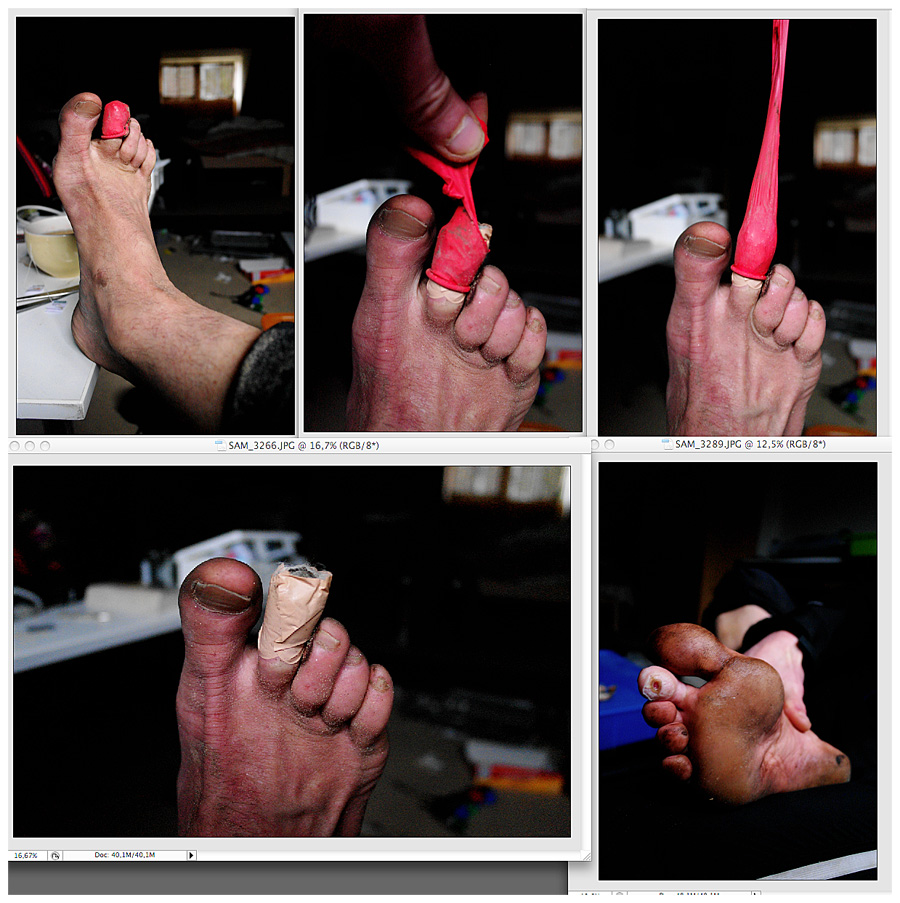
Above: Removing the balloon, revealing the toe.

Above: Four negro-toes and their Albino brother, after the balloon flight.

Above: April 14th

Above: April 19th, several more runs later. As Winter definitely dissolved into Spring, with T-shirt runs and sweat, the-hole-in-the-sole approaches closing-time as a natural protective layer has been created.

Above: On April 21th

Above: April 24th

Above: Winter training ends here.
With the frostbite practically healed (as shown on images 2 and 3 below) every Season comes with its characteristic injuries/warnings. Spring has thorns on the ground... Stepping into them happens and carries both:
1) A WARNING (do not be afraid of it, do not recklessly fly of the straight roads either: navigate the terrain strategically, be aware, find the pleasant rhythem and apply that to your training);
2) THE NEED to inspect your feet for damage. Usually you can continue the run and will it be a PT (Post-Training) SOP (Standard Operating Procedure). To prevent a thorn in the foot from affecting your painless running, even leading to serious injuries over time, you have to be able to cut them out. And as they can go deep sometimes, that is where you have to go to get them out: deep under the surface layers...
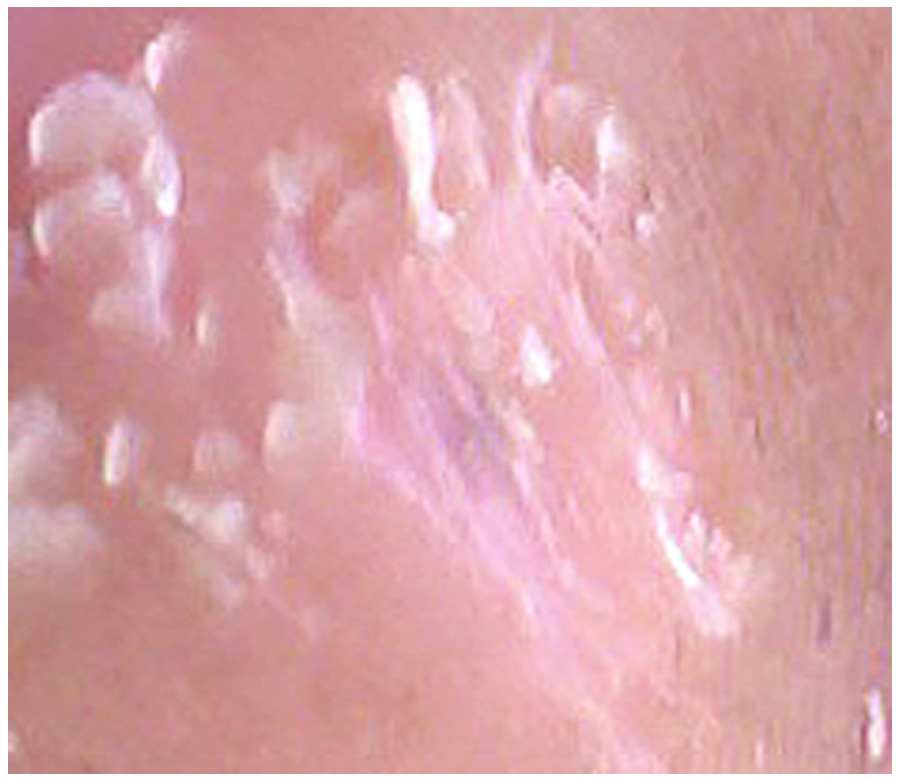
Above: Haarlem 2 May 2013. Shade in frame center indicates thorn in foot sole. White area is soft skin after soap-bath and first removal to dig up the thorn. Digital frame enlargement from second image below.

Above: (1)

Above: (2)
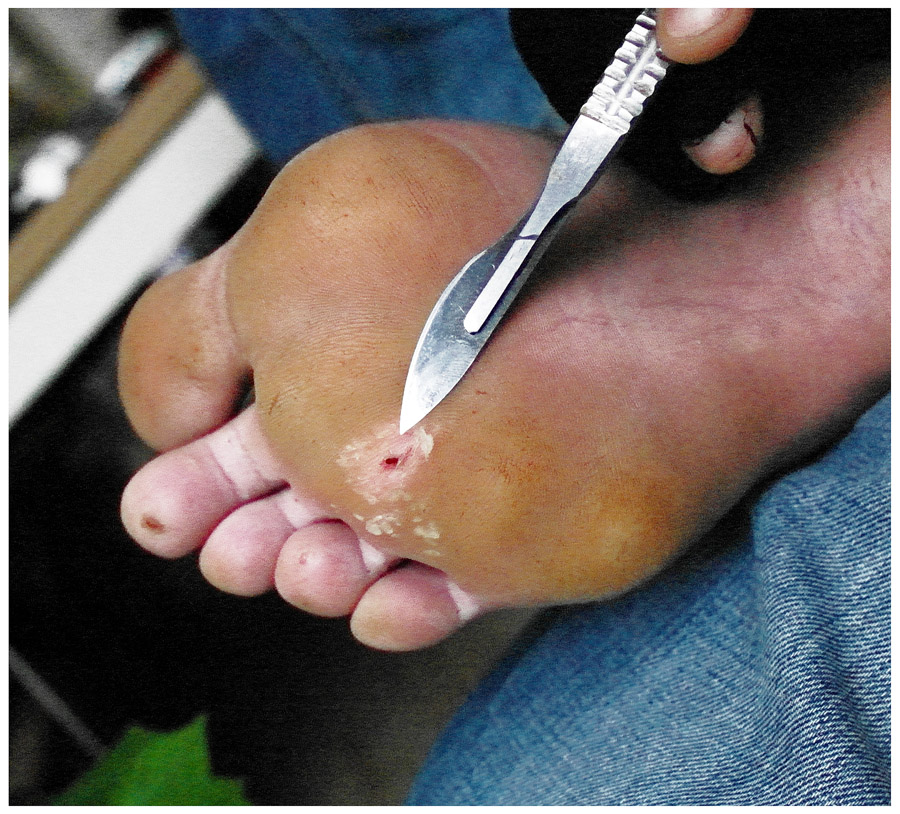
Above: (3)
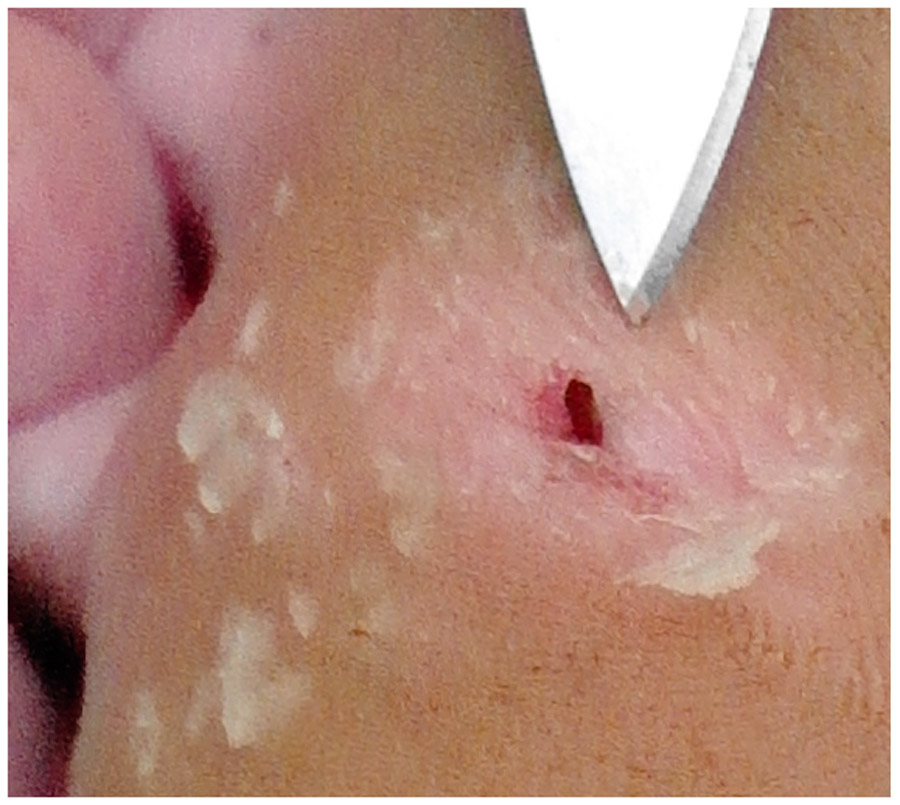
Above: (4)

Above: (5) Removed thorn on fingertip. You don't want to keep these things in your feet, as it affects your balance and may trigger injuries!
On the pictures above: Thorn removal after run on May first. Starting with a water and soap bath (1), (after localising hidden thorn-area) slicing off surface layer (2) and get the thing out (1-5).
______________
¹ There were no negative side effects to be reported; the balloon turned out to be a smooth part of the training.


